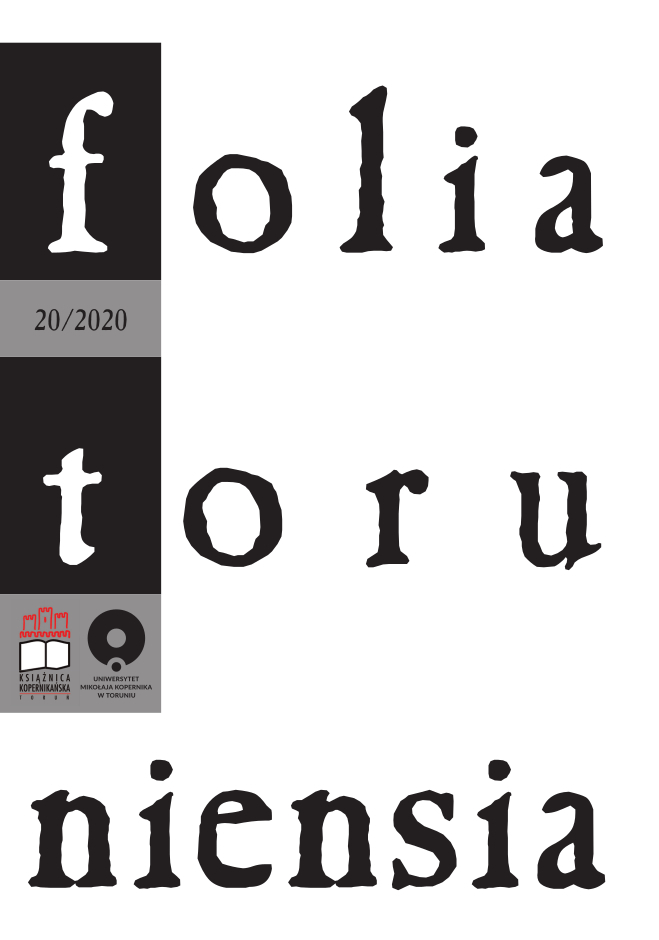The Karaite communities: harnessing the multi-lingual linguistic strategies for nationalism
DOI:
https://doi.org/10.12775/FT.2020.004Klíčová slova
Karaites, Poland, language planning, Seraja Szapszał, Turkic language, TurkeyAbstrakt
The Karaites communities of former Polish – Lithuanian Commonwealth in the beginning of the 20th century started a discussion in their communal press on which language they should adopt as their communal or national language. This view remained important during the first half of 20th century. It was considered as a tool for social and cultural consolidation of the communities and as an important aspect of their social image in the eyes of Polish society. Karaite leaders tried several different strategies for establishment of national language, starting from traditional bilingualism (Hebrew – Turkic) to different combinations of Russian – Hebrew, Polish – Turkic and etc. These initiatives grew stronger after the World War 1, when ethnic nationalism was arising both in Karaite communities and in dominating Polish society. The analysis of these language strategies was done using a model language planning elaborated by Geoffrey Haig in Kurdish language in modern Turkey, under the politics of Kemal Ataturk (Mustafa Kemal Atatürk, 1881–1938). The article has highlighted these strategies, analyzed argumentation, and presented linguistic reforms implemented in the Karaite communities in the first half of the 20th century. It was argued that the social image of Karaites in the dominating society played an important role in decision making by Karaite leaders. It was also understood that language was not only an important aspect of Karaite cultural identity but also a tool for integration into dominating society.
Reference
Author unknown. 1914. „The list of Holidays for the year 5674.” Karaimskoe Slovo 7-8:18.
Borbone, Pier Giorgio. 2011. “Choice of Script as a Mark of Cultural or/and National Identity.” In Myths, Heroes Gender and Identities. A CLIOHWORLD-CLIOHRES ISHA Reader 4, comp. A. Popa, B. Rentea, 177-188. CLIOHWORLD.
Geraci, Robert P. 2009. Window on the East: National and Imperial Identities in Late Tsarist Russia. Ithaca and London: Cornell University Press.
Haig, Geoffrey. 2005. „The Invisibilisation of Kurdish: the other side of language planning in Turkey.“ In Die Kurden: Studien zu ihrer Sprache, Geschichte und Kultur, ed. S. Conermann, G. Haig, 121-150. Schenefeld: EB-Verlag.
Hroch, Miroslav. 2012. Mažosios Europos tautos. Vilnius: Mintis. https://doi.org/10.1075/lplp.30.2.02seb.
Jagodzińska, Agnieszka. 2008. Pomiędzy. Akulturacja Żydów Warszawy w drugiej połowie XIX wieku. Wrocław: Wydawnictwo Uniwersytetu Wrocławskiego.
Kizilov, Mikhail. 2015. The Sons of Scripture. The Karaites in Poland and Lithuania in the Twentieth Century. Berlin: De Gruyter.
Kokizov, David. 1911. „Ruskij ili tatarskij.“ Karaimskaia Zhizn’ 2:35.
Letter by Karaite community to the Ministry of Religious Affairs and Public Education. sig. 1465. The Central Archives of Modern Records, Poland.
Letter by Karaite community to Wilno/Vilnius Voivode. sig. 1465. The Central Archives of Modern Records, Poland.
Michałowska – Mycielska, Anna. 2014. Sejm Żydów Litewskich (1623-1764). Warszawa: Dialog.
Pełtyn, Samuel. 1885. Projekt reformy w judaizmie ze szczególnym uwzględnieniem jego strony etycznej. Warszawa: Publisher not identified, typ. E. Skiwski.
Project of Legislation of Karaite community status in Poland. sig. 1462. Archiwum Akt Nowych w Warszawie, Poland.
Remarks by S. Szapszal for unknown reasons and without indicatedrecipient. sig. 1646. The Central Archives of Modern Records, Poland.
S. Szapszal to the Ministry of Religious Affairs and Public Education. sig. 1464. The Central Archives of Modern Records, Poland.
Sebba, Mark. 2006. “Ideology and Alphabets in the former USSR.” Language Problems and Language Planning, vol. 30, no. 2, pp. 99-125.
Shapira, Dan. 2003. “The Turkic languages and Literatures of East European Karaites.” In Karaite Judaism. A Guide to its History and Literary Sources (Handbook of Oriental Studies. Section 1: The Near and Middle East, vol. 73), ed. M. Polliack, 657- 658, Leiden: Brill.
Shapira, Dan. 2005. “A Jewish Pan-Turkist: Seraya Szapszał (Şapşaloğlu) and his work „Quirim Qaray Türklëri“ (1928) (Judeo-Turkica XIII).“ Acta Orientalia Hungaricae, 58: 349-380.
Staliūnas, Darius. 2009. Rusinimas: Lietuva ir Baltarusija po 1863 metų. Vilnius: Lietuvos istorijos institutas.
Troskovaitė, Dovilė. 2014. „Lenkijos ir Lietuvos karaimų savivokos formavimas XIX a. vid. – XX a. pirmoje pusėje: tarp atsiskyrimo ir prisitaikymo.“ PhD thiss., Klaipėda university.
Tuna, Mustafa Özgür. 2002. „Gaspirali v. Il'Minskii: Two Identity Projects for the Muslims of the Russian Empire.“ Nationalities Papers 20(2):265-289. https://doi.org/10.1080/00905990220140658.
Writing of the governmental representative in Wilno/Vilnius region. sig. 1461. The Central Archives of Modern Records, Poland.
Stahování
Publikováno
Jak citovat
Číslo
Sekce
Licence
Authors sign the license agreement, where authors have copyright but license exclusive rights in their article to the publisher. In this case authors have a range of rights, including:
- The right to share or reuse their article in the same ways permitted to third parties under the Creative Commons Attribution-NoDerivatives 4.0 (CC BY-ND 4.0) license. Following it, the author can "copy and redistribute the material in any medium or format for any purpose, even commercially. The licensor cannot revoke these freedoms as long as you follow the license terms."
- Authors retain patent, trademark and other intellectual property rights (including research data).
- Authors receive proper attribution and credit for the published work.
![]()
Stats
Number of views and downloads: 679
Number of citations: 0



